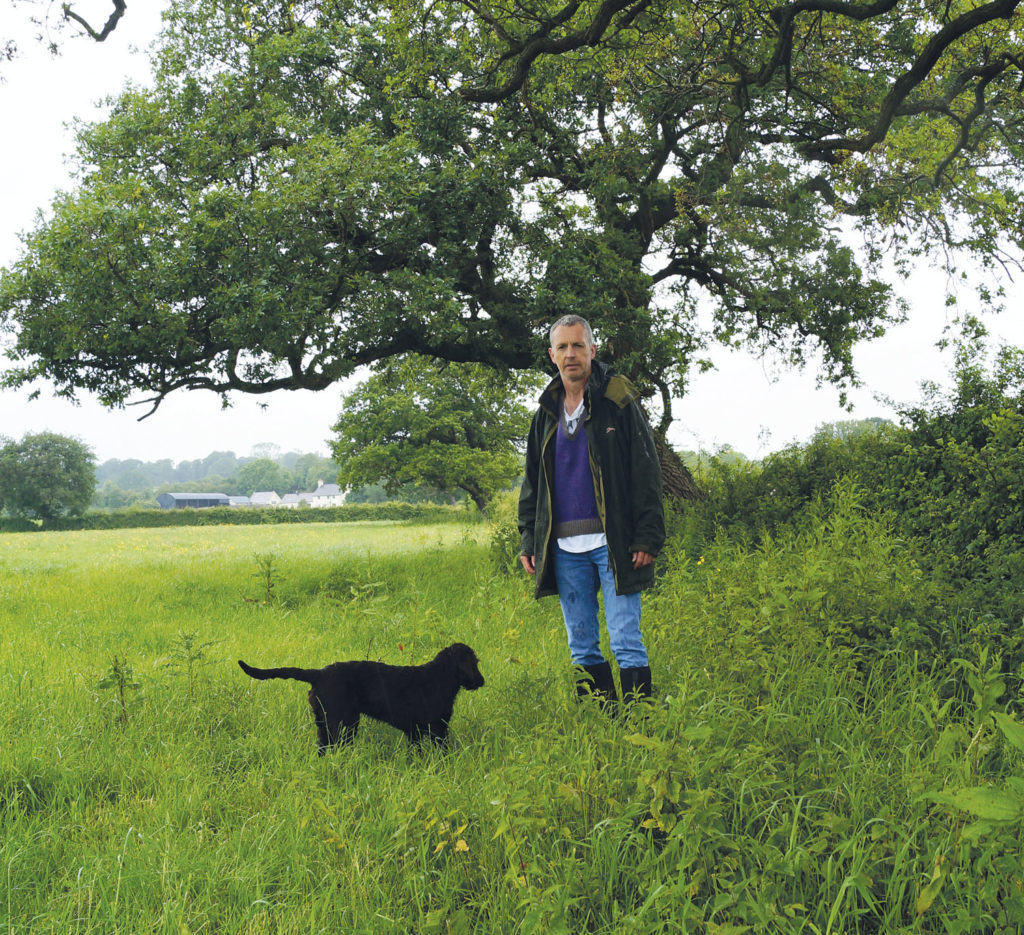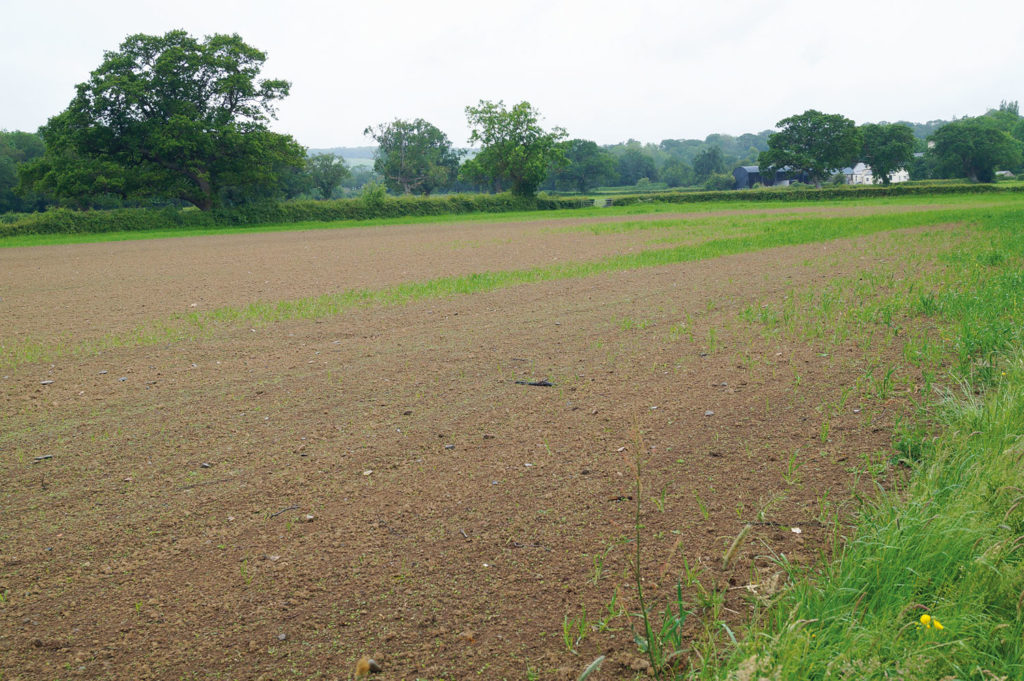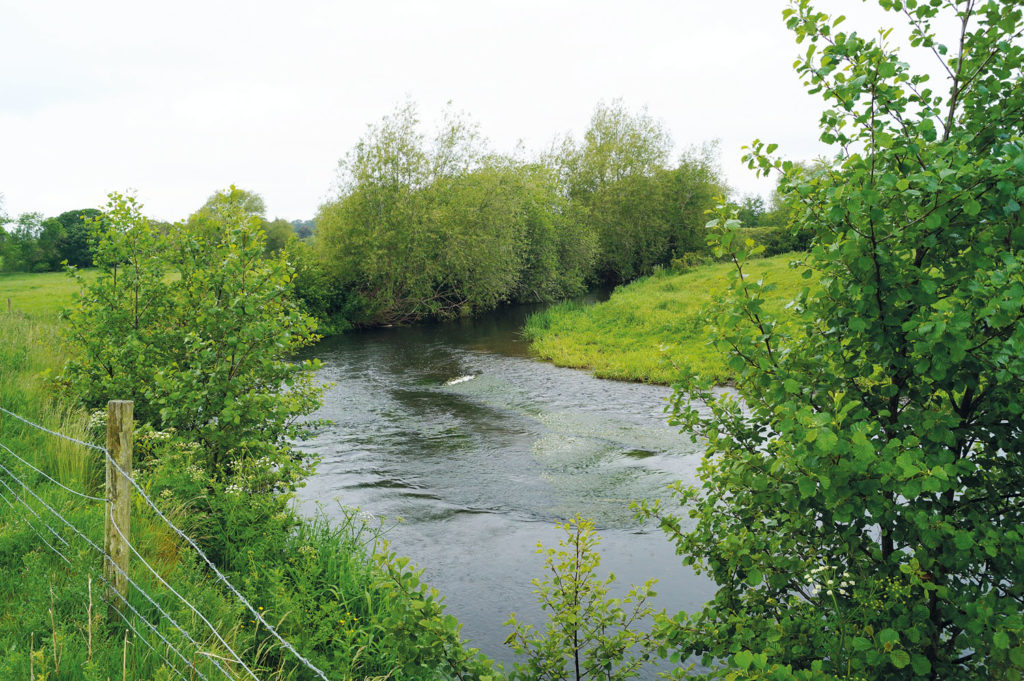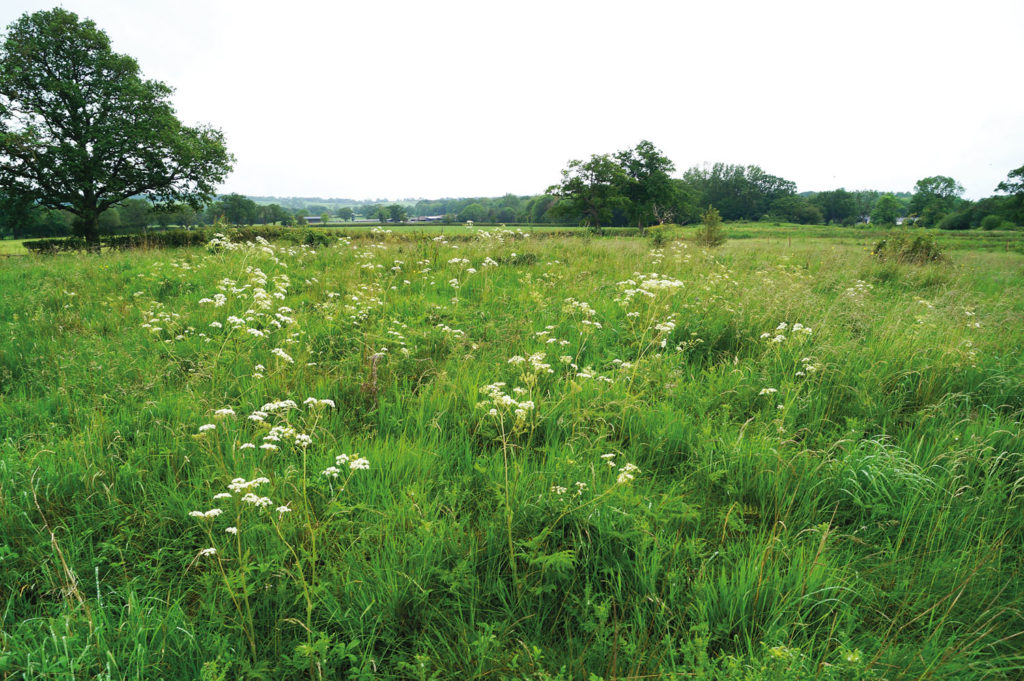Denbighshire dairy farmer Ant Griffith says a new approach to agri-environment schemes could reverse wildlife declines

Following a family tradition of conservation, Denbighshire dairy farmer Ant Griffith says adapting agri-environment schemes to livestock farming could save wildlife in Wales. He believes a new approach to conservation is needed and that, with practical schemes and the right kind of incentives, Welsh farmers can reverse biodiversity declines. He said: “The entry-level Glastir, the old agri-environment scheme, was discontinued because it didn’t have the hoped for impact, but it was never farmer friendly. We must keep it simple to get farmers on board.”
The Griffith family has been farming in the Vale of Clwyd in Denbighshire for more than 200 years and a love of nature runs in the family. Ant’s father was a passionate conservationist and commissioned a survey of the wildlife on the estate in 1975, which was rich in now-rare species such as lapwing and curlew. Today Ant runs the family’s 1,500-acre Plas Newydd estate and is in a share farm agreement with his partner Rhodri Ellis, who manages their organic dairy herd, soon to be expanded to 850 cows.
Farm facts
- Location: Trefnant, Denbighshire
- Type of farming: dairy
- Acreage: 1,500 (120-acre woods and 150 acres tenanted)
- Funding Grants: None
No insecticides, herbicides or fertilisers, except for manure, are used on the land, but Ant recognises that pasture alone does not provide the necessary range of wildlife habitats. He said: “Though we are organic, it is still what you might call an ‘intensive’ system. Our grass leys have only three species and are grazed hard and cut for silage, so we need to work at retaining and restoring biodiversity.”
Agriculture in Wales is predominantly livestock farming, so it is vital that future agri-environment schemes are better geared to intensive grassland management than the previous more hill-farm focused agreements. It’s harder for dairy, beef and sheep farmers to take field margins or headlands out of production as they would need to be fenced off, but Ant believes there are other ways of creating space for nature: “In the old scheme there was no option for simply fencing off odd corners of less productive, harder to access land and letting the grass grow. The bits that I did off my own back are now full of native plants and insects, which in turn feed the songbirds, so why shouldn’t they be funded?”
The farm has taken 50 acres of such land out of intensive production, including two fields preserved as traditional hay meadows. In addition, there are several areas of tussocky grass, which are lightly grazed by cattle in September and topped every three years to stop blackthorn encroaching. No longer being in a scheme means Ant can decide when to cut them. He said: “Farming is dependent on being able to do things when the timing is right. In past agreements we were not permitted to cut hay meadows before 15 July, but if the weather’s right and the wader chicks have hatched you should be able to get on with it. We must give people the flexibility to manage their conservation areas well.”
Traditional mixed farms which produced a combination of livestock and arable crops are largely a thing of the past. The switch to grass monocultures has seen an increase in predator species that feed on the larvae and worms in the soil such as crows and jackdaws, but has drastically reduced availability of food for smaller song birds such as finches.

To mitigate this, Ant sowed a field of spring barley primarily as a nesting ground for the resident five pairs of lapwings and he a planned to leave it unharvested for the smaller birds to feed on in winter. Sadly the lapwings failed to return and the crop was devastated by wireworm, but by late May it was re-drilled with a wider variety of seed including red clover, chicory and phacelia to cater for a greater range of birds. He said: “It has been a learning curve for us as we are inexperienced at arable. I think this will be the same for many farmers in Wales, and advice on what to plant where and how to cultivate it will be essential.”
Another aspect of the old schemes which Ant feels put people off was the overly bureaucratic box-ticking culture that would instantly fine farmers for any deviation from the regulations, even if it was an honest mistake and the intention was good. He said: “Towards the end of my agreement, I was fined £3,500 because I failed to describe winter stubbles as a secondary crop on the form and forgot to send in a copy of my dairy contract, yet had gone way beyond fulfilling my agri-environmental conditions. They only backed down five days before my appeal hearing. I was saddened by the whole thing as it seemed counter to the idea of building trust and partnership.”
On another occasion, he cut down a group of poplars and Natural Resources Wales (NRW) insisted that the area should be replanted. Ant said: “We have 130 acres of woodland on the farm, all slightly different and trying to achieve different goals. What we don’t have is enough managed areas of scrub, so I wanted to leave the plot to its own devices. Natural Resources Wales only relented when I described it as ‘natural regeneration’, but they told me they would come and inspect it in five years and it would have to be replanted if no trees had grown.”
As well as the unnecessarily aggressive enforcement of impractical restrictions, Ant is convinced more ‘easy wins’ would make the schemes much more appealing. One of these could be paying farmers to cut hedges every two years rather than every year, which would hugely increase the amount of hedgerow fruit available to birds over winter. This is straightforward to instigate and could actually reduce the bill for hedge cutting. Plas Newydd has adopted this approach and has a mix of hedge types to suit different bird species, with some allowed to grow taller before being cut and laid.
Another simple measure being introduced on the farm is permanent pasture margins. The organic system requires the grass to be ploughed and re-sown every ten years to help keep weeds at bay, which means it doesn’t develop the thatch of organic material that is home to insects. Ant said: “Eventually I want us to have unploughed margins around every field on the farm. My partner Rhodri was sceptical at first, but he’s coming round to the idea. I said three metres, he said two metres, but no doubt we’ll meet somewhere in the middle!”

Fencing off water courses on farmland to stop livestock getting into the river and eroding the banks is another ‘easy win’ for Ant. Through one of the measures under the previous Glastir agreement he fenced the mile of the Clwyd, which runs through the estate. This benefits fly life and aquatic plants, but sadly sea trout remain in decline in the river and salmon are very scarce. The poor health of Wales’ rivers is why Welsh Government is increasingly focused on protecting water catchments from farming pollution and is offering farmers grants to improve their waste management systems.
Plas Newydd has invested in a new slurry lagoon, meaning they can avoid having to spread muck at the wrong time. Ant said: “There is no justification on any level for polluting streams and rivers. We have to take responsibility. NRW is rightly going to start hammering those caught polluting, but really we need a cultural shift where farmers want to avoid it because it’s wrong, rather than because they will be punished.”
Ant believes part of the reason why the farming culture is slow to change mindset is a lack of understanding of the long-term impacts many modern farming practices will have on ecosystems and ultimately farm businesses. He said: “Since the war, government policy focused only on production and so it is understandably deeply engrained in farming culture. Farmers are much more likely to take up conservation measures if they can see the good reasons for them, so it’s vital this information gap is bridged.”
With this in mind he recently hosted a day for farmers to visit Plas Newydd and hear talks on these issues by experts from the GWCT, including director of the Allerton Project Demonstration Farm Alastair Leake. Ant said: “We
had some very positive feedback from the day. I think the penny finally dropped for many of those who attended that you can farm profitably while making a real difference to the environmental health of your land. The GWCT is needed in Wales because it produces solutions based on scientific evidence while at the same time understanding the practical challenges of farming. The research it has done into cover crops for different species and regions of the country will be invaluable in enabling more Welsh farmers to plant food for birds.”

According to Ant, there is reason to be optimistic about the future of more environmentally friendly farming, but only if government policy actively engages with farmers, schemes are adequately funded, and advice is readily available. Looking ahead, the estate is bringing 350 acres back in hand, which mean that Plas Newydd will have more permanent pasture margins, hedge management and areas of scrubland. Ant has also asked the GWCT to carry out a biodiversity assessment to establish a benchmark to measure any increase in wildlife as a result of changes to the farm system.
Ant said: “Everywhere you look, the Welsh countryside is bulging with livestock. I realise I am lucky to have enough land be able to fence off 50 acres, but if every farmer was supported in taking five percent of their farm out of production it could create a habitat network with a real chance to reverse declines and return some of the wonderful wildlife we have lost.”
This case study is taken from our book Working Conservationists Issue 2, available here for just £3.95.
